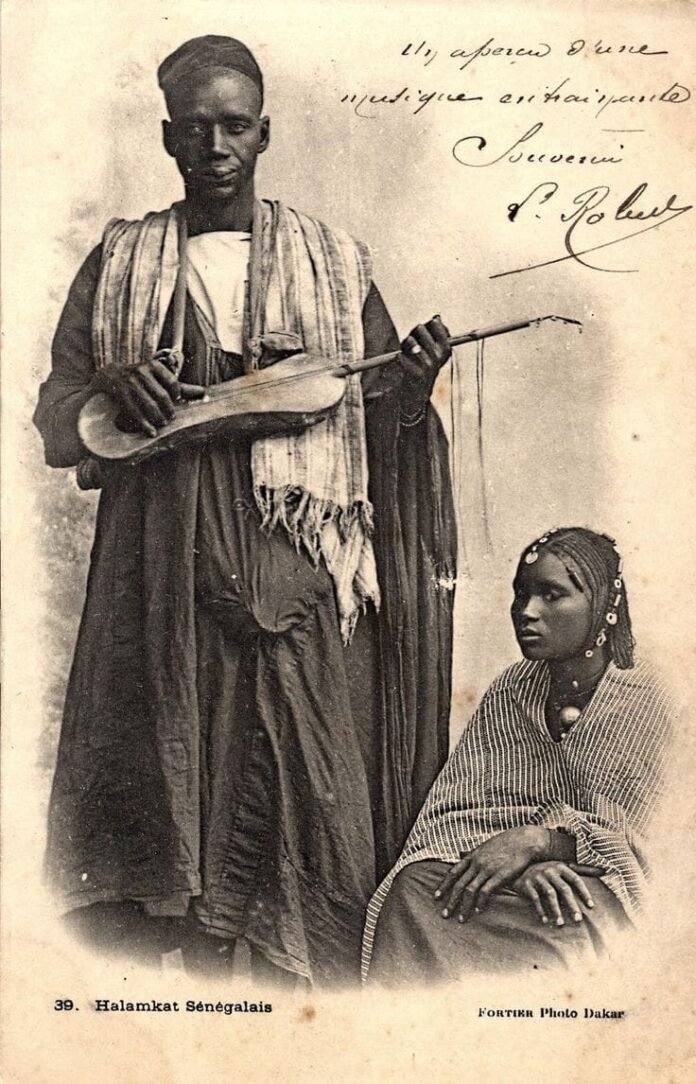
The Xalam is the Traditional Lute; originated from West Africa, it is a Wooden Oval body whose top is covered with cattle. a Griot couple from Senegal in the early 20th century. Signifying their culture and traditions and providing a window into the rich traditions of storytelling and music within Senegalese society.
Griots, esteemed as oral historians and musicians, are central to West African traditions, particularly in Senegal. They are entrusted with preserving and transmitting the collective memory of their communities through history, genealogy, and legends. Passed down through generations, their stories and songs interweave the vibrant tapestry of Senegalese culture, conveying invaluable lessons, values, and ancestral wisdom.
Fortier’s photograph depicts a Griot couple adorned in resplendent traditional garments, their eyes reflecting pride and wisdom acquired through years of devoted artistry. The man, draped in flowing robes and crowned with a turban, stands with a Xalam—a distinctive oval-shaped plucked lute—resting against his shoulder. This instrument, known as the Halamkat Sénégalais’, suggests their affiliation with the Wolof ethnic group.
This beautiful Wolof woman, likely the singer, is dressed in intricately patterned fabric, emanating grace and elegance, her presence resonating with the poise of a Griotess.
Together, they embody the sacred responsibility of their role as custodians of culture.
Through their Xalam, a symbol of their craft, Griots transport listeners to ethereal realms, weaving melodies and lyrics that transcend time. Their voices carry the weight of emotions, recounting ancient tales of heroes, kings, and mythical beings. Griots possess an innate ability to captivate their audience, infusing their performances with improvisation and lyrical artistry that breathe life into the narratives they share.
Beyond their musical prowess, Griots also serve as trusted advisers, mediators, and spiritual guides within their communities. The Griots bridge the gap between the past and present, utilizing their words and music to forge connections across generations and instil a profound sense of cultural identity and pride.
Edmond Fortier’s photograph immortalizes the Griot couple, offering a glimpse into an era when their esteemed presence and artistic contributions were celebrated. It pays homage to the depth of their knowledge, the power of their storytelling, and the resplendence of their musical heritage.
As we gaze upon this frozen moment, we are reminded of the Griots’ enduring legacy in Senegal and beyond. They are the custodians of history, the guardians of tradition, and the living embodiment of the soul of a nation. Through their unwavering dedication, Griots ensure that the stories, rhythms, and ancestral wisdom continue to resonate within the hearts and minds of future generations, keeping the spirit of Senegal alive.